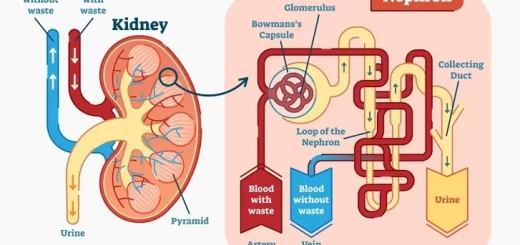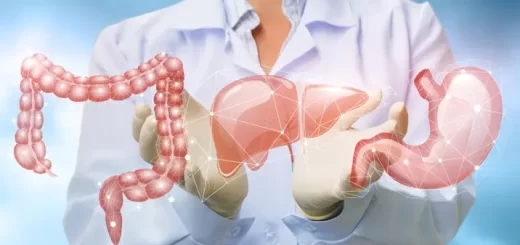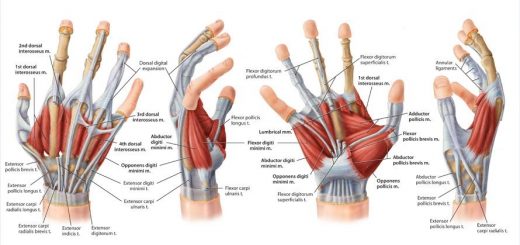Mechanics of ventilation, Structures of Respiratory system and Functions of conducting zone
The respiratory system allows oxygen in the air to be taken into the body, and it enables the body to get rid of carbon dioxide in the air breathed out, It consists of all the organs involved in breathing, These include the nose, pharynx, larynx, trachea, bronchi, and lungs, Human respiratory system suffers from common respiratory symptoms include breathlessness, cough, and chest pain.
Mechanics of ventilation
The main goal of respiration is to provide oxygen to the tissues and to remove carbon dioxide. Respiration includes two processes:
- External respiration, the absorption of O2, and removal of CO2 from the body as a whole.
- Internal respiration, the utilization of O2 and production of CO2 by cells, and the gas exchange between the cells and their fluid medium.
External respiration can be divided into four major steps:
- Pulmonary ventilation, which means the inflow and outflow of air between the atmosphere and the lung alveoli; and the distribution of air within the lungs. This process occurs through breathing movements and is regulated by respiratory centers present in the brain stem.
- Diffusion: exchange of gases (O2 and CO2) between the air in the alveoli and the blood in pulmonary capillaries.
- Perfusion: distribution of blood through the lungs. The normal volume of blood perfusing the lungs is 5-5.5 L/ min. It is equal to cardiac output.
- Gas transport: blood transports O2 from the lungs to the tissues and CO2 from the tissues to the lungs.
Structures of the respiratory system
Respiratory centers: located in the brain stem and connected to the respiratory muscles by respiratory nerve fibers.
Respiratory muscles: Muscles of inspiration, and Muscles of expiration.
Airways: The tracheobronchial tree, an arrangement of branching tubes begins at the larynx, The largest airway is the trachea designated as (generation 0), The airway tree progressively bifurcates down to the alveolar sacs (generation 23), Each generation is progressively smaller in both diameter and length, The larger conducting airways (generations 0 through 16) transport air between the outside and the gas-exchanging regions of the lungs, The smaller respiratory airways (generations 17 through 23) not only conduct air but also permit gas diffusion which increases in significance closer to the alveoli.
The first 16 generations (conducting zone) are made up of the trachea, bronchi, and bronchioles, In succeeding generations, the number of bronchioles increases and the diameter diminishes.
The remaining 7 generations (Respiratory zone) are made up of respiratory bronchioles, alveolar ducts, alveolar sacs, and alveoli. In the respiratory bronchioles, a gradual transition in function from conduction to gas exchange occurs.
The first 16 generations (Z) make up the conducting airways, and the last 7 the respiratory zone, BR, Bronchus; BL; Bronchiole; TBL, Terminal bronchiole RBL respiratory bronchiole, AD, alveolar duct; AS, alveolar sac.
Functions of the conducting zone
1. Conduction of air into the respiratory zone
The conducting one of the respiratory systems consists of the mouth, nose, pharynx, trachea, primary bronchi, and all successive branching of the bronchioles up to and including the terminal bronchioles.
2. Air conditioning
When the inspired air reaches the respiratory zone, its temperature is 37° C (body temperature) regardless of the temperature. This function is needed to maintain a constant internal body temperature. The mucosa of the nose, mouth, and pharynx has a large surface area and a rich blood supply, This adds heat to cold air or removes heat from hot air.



